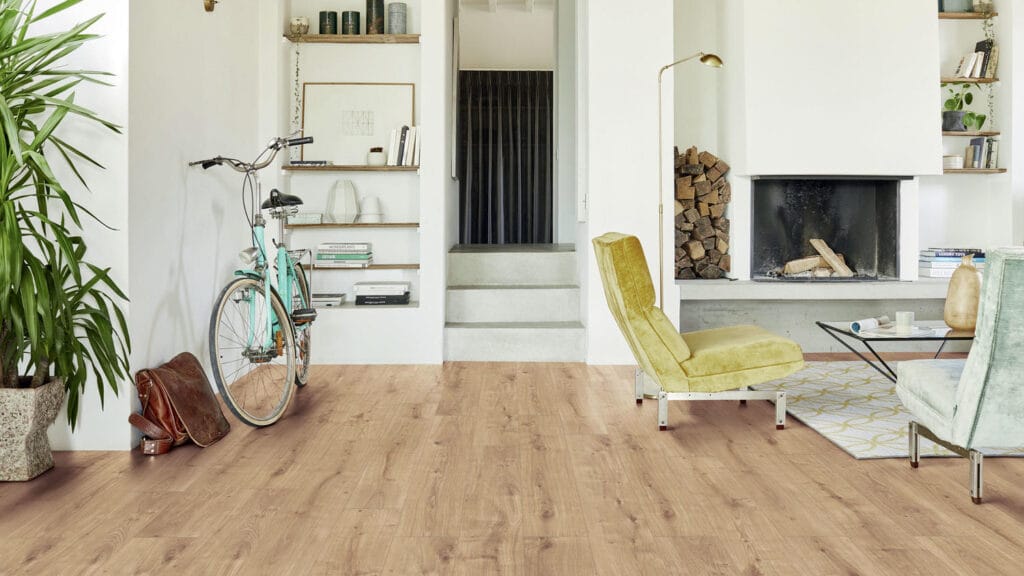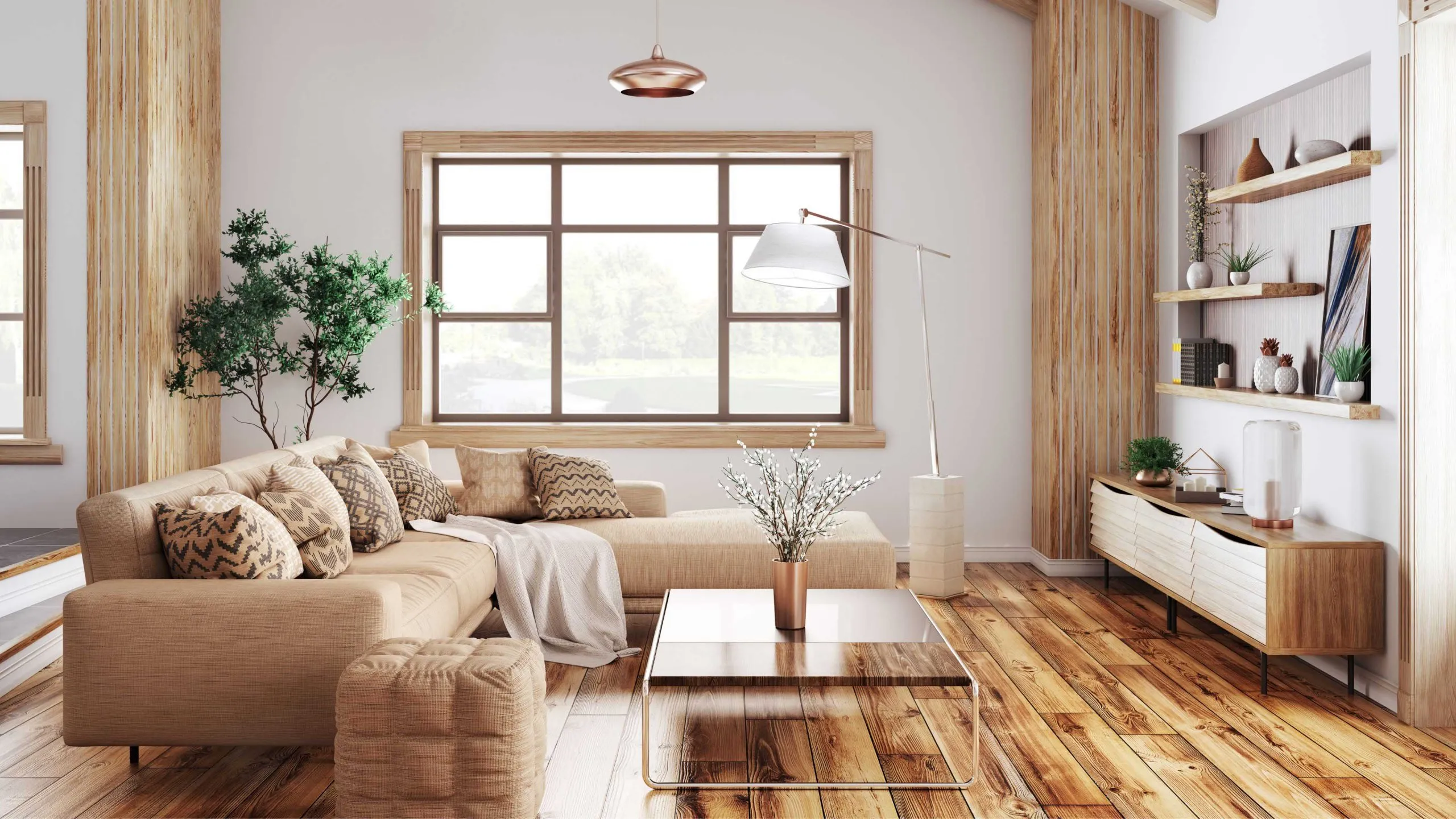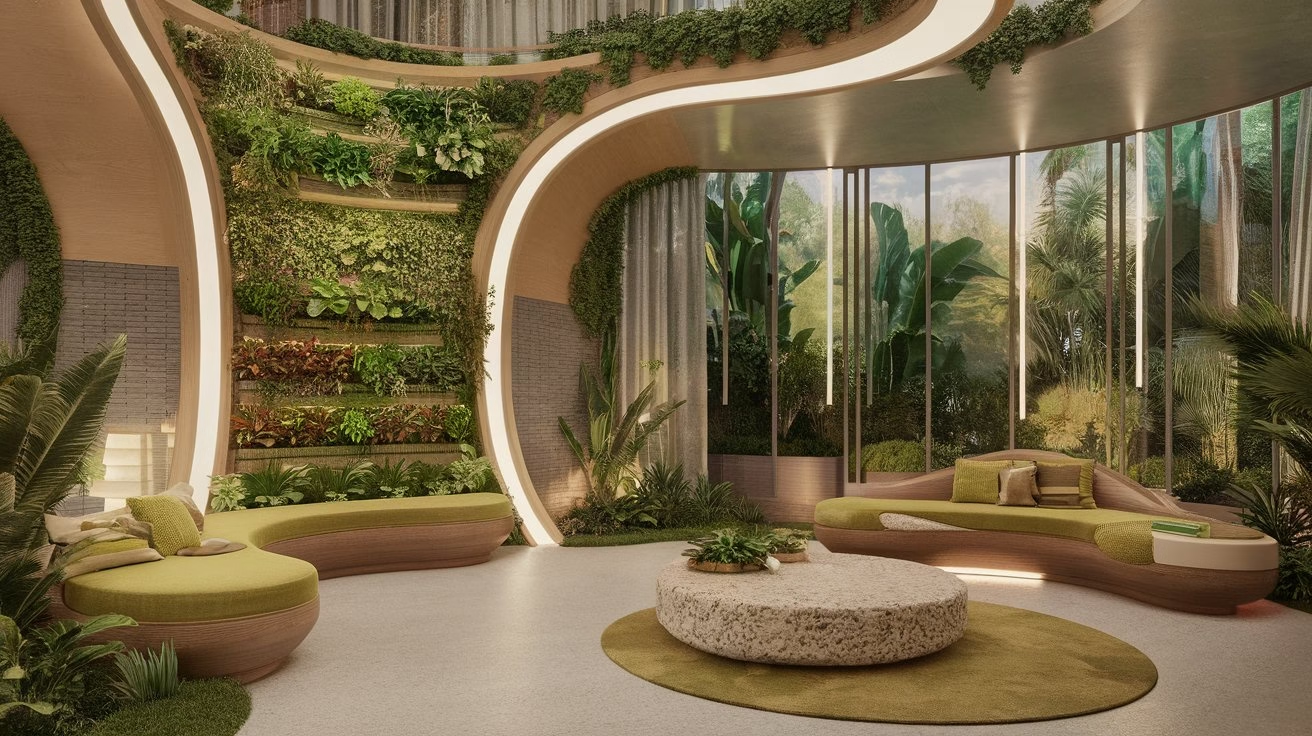Introduction to Modern Flooring Trends
The landscape of flooring options for modern homes has evolved significantly, reflecting changes in design preferences, lifestyles, and technological advancements. As homeowners seek to create spaces that are not only aesthetically pleasing but also functional and durable, the choice of flooring plays a crucial role in home renovation projects. In recent years, materials such as hardwood, laminate, vinyl, and porcelain have gained prominence, each offering unique advantages suited to various living environments.
Trends indicate a growing preference for eco-friendly and sustainable flooring options, as consumers become more conscious of their environmental impact. For instance, bamboo and cork have emerged as popular choices, providing both style and sustainability. Moreover, technological developments have led to the creation of high-performance materials that replicate the look of natural flooring while enhancing durability and ease of maintenance.
Statistics reveal a notable increase in home renovation projects, particularly focused on flooring. According to a survey conducted by the National Association of Home Builders, approximately 40% of homeowners prioritize flooring updates during renovations. This trend underscores the significance of selecting suitable flooring that complements the overall design theme while maintaining longevity under daily wear and tear.
Furthermore, the rise in open-concept living spaces has influenced flooring choices, with many homeowners opting for consistent materials across different areas of their homes to create a seamless flow. As trends continue to shift towards personalization and comfort, the importance of selecting the right flooring option based on style, durability, and functionality cannot be overstated. This blog post will provide an in-depth comparison of the top 10 flooring options available for modern homes, aiding homeowners in making informed choices tailored to their specific needs.
Hardwood Flooring: Timeless Elegance

Hardwood flooring has long been a preferred choice among homeowners, celebrated for its aesthetic charm and durability. This flooring option is composed of natural wood that not only adds warmth and character to a living space but also contributes to the overall value of a home. The richness of hardwood enhances interior design, making it an ideal option for various styles, from traditional to contemporary.
There are several types of hardwood available, including oak, maple, walnut, and cherry. Each type boasts unique grain patterns and color variations, allowing homeowners to select the perfect match for their décor. The two main categories of hardwood flooring are solid and engineered. Solid hardwood consists of a single piece of wood throughout, while engineered hardwood features a thin veneer of natural wood over a composite base. This distinction is essential for installation and future renovations, as solid hardwood can be sanded and refinished multiple times, whereas engineered options may have limitations.
Installation of hardwood flooring can be achieved through various methods, such as nail-down, glue-down, and floating systems. Each method has its pros and cons, largely depending on the specific requirements of the space and the type of hardwood selected. Due diligence during installation ensures both long-term stability and visual appeal.
Maintaining hardwood floors is straightforward but requires attention to preserve their beauty. Regular sweeping and the use of appropriate cleaning products keep the surface free from dirt and debris. It’s also advisable to control humidity levels, as excessive moisture can cause warping or mold development.
As eco-consciousness grows, many modern homeowners are opting for sustainably sourced hardwood, which ensures minimal environmental impact. According to recent statistics, sales of sustainably harvested hardwood have increased by 25% in the last five years, reflecting a significant shift in consumer preferences. This reflects a growing trend as homeowners increasingly seek styles that marry elegance with functionality alongside environmental responsibility.
Luxury Vinyl Plank (LVP): Affordable Versatility

Luxury Vinyl Plank (LVP) has rapidly gained traction in the modern flooring market, emerging as a top choice for homeowners seeking both style and functionality without the high costs associated with traditional hardwood flooring. One of the most significant advantages of LVP is its affordability. While authentic hardwood may set buyers back significantly, luxury vinyl provides an attractive alternative at a fraction of the price, making it an appealing option for those on a budget.
Another major draw of LVP is its diverse range of styles. It mimics the appearance of natural wood, stone, or tile through advanced printing technology, offering textures and colors that can suit various design aesthetics. From rustic oak to sleek walnut, the available designs cater to a multitude of preferences, ensuring that homeowners can find an option that aligns perfectly with their vision for their living spaces.
In terms of durability, LVP stands out as well. It is resistant to scratches, stains, and moisture, making it a practical choice for high-traffic areas or homes with pets. Maintenance is also straightforward, as regular sweeping and occasional mopping are usually sufficient to keep the surface looking pristine. This offers an advantage over traditional hardwood, which can require refinishing or other upkeep to maintain its appearance over time. Moreover, LVP’s ease of installation—often featuring a click-lock system—means less labor-intensive procedures compared to hardwood.
Current market trends highlight the increasing popularity of LVP in modern homes. Consumers are increasingly drawn to its practical benefits paired with aesthetic appeal. Brands are continually innovating, introducing new designs that reflect current interior design trends, thus reinforcing LVP’s status as a versatile flooring option that appeals to a broad audience.
Laminate Flooring: Budget-Friendly Alternatives

Laminate flooring is a popular choice among homeowners seeking an affordable yet stylish flooring option. This versatile material mimics the appearance of more expensive flooring types, such as hardwood, stone, or tile, making it an attractive alternative for modern homes. Constructed from a high-density fiberboard core, laminate floors are covered with a photo layer that simulates the desired aesthetic, along with a protective wear layer that enhances durability.
One of the key benefits of laminate flooring is its budget-friendly nature. Compared to traditional hardwood, laminate can be significantly less expensive while still delivering a similar visual impact. For homeowners with financial constraints, laminate offers a practical solution, enabling them to achieve their design goals without breaking the bank. Furthermore, the installation process of laminate flooring is fairly straightforward. It often employs a click-lock system, allowing for easy DIY installations without the need for professional assistance, resulting in additional savings.
Maintenance is another area where laminate flooring excels. It is inherently resistant to scratches and stains, making it ideal for high-traffic areas in the home. Regular cleaning typically only requires sweeping or vacuuming, followed by damp mopping, which adds to its overall appeal. The latest designs in laminate flooring have also made strides in aesthetic refinement, with options available in various textures and colors that can seamlessly blend with contemporary decor.
When comparing laminate flooring to other options like luxury vinyl or hardwood, it is essential to consider both price and performance. While vinyl may offer superior water resistance, laminate is generally more budget-friendly. In summary, laminate flooring stands out as a highly viable choice for homeowners looking to combine affordability with style and ease of maintenance.
Tile Flooring: Classic Durability

Tile flooring stands out as a versatile and durable option for modern homes. It is available in various materials, with porcelain and ceramic being among the most popular due to their resilience and aesthetic appeal. Porcelain tiles, fired at higher temperatures than ceramic tiles, are known for their water resistance and strength, making them an excellent choice for areas prone to moisture, such as bathrooms and kitchens. Ceramic tiles, while slightly less durable, offer a wide range of colors, patterns, and textures, allowing homeowners to achieve unique design aesthetics.
The application of tile flooring extends far beyond traditional settings, often seen in living rooms, entryways, and outdoor spaces. The advent of larger, format tiles has revolutionized the flooring market, providing a more seamless look while reducing grout lines and maintenance efforts. Additionally, trendy hexagonal or patterned tiles can create striking visual effects, making them a favored choice among interior designers.
From both a functional and stylistic perspective, tile flooring is also lauded for its exceptional durability. It is resistant to scratches, dents, and stains, which makes it an ideal choice for high-traffic areas. Maintenance is simplified, as regular sweeping and occasional mopping will keep tile floors looking pristine. However, to ensure longevity, it’s crucial to address any chips or cracks promptly to prevent water infiltration.
Cost considerations for tile flooring can vary widely based on material, size, and pattern complexity. While some high-end tiles might represent a larger initial investment, the long-term durability and low maintenance needs of tile flooring often justify the expense. Thus, tile flooring remains a preferred choice for homeowners seeking a balance between style and functionality in modern settings.
Carpet: Comfort and Style
Carpet flooring has long been favored for its unmatched comfort and aesthetic appeal. In contemporary homes, carpets not only enhance visual warmth but also provide a cozy alternative to harder surface flooring. Notably, advancements in carpet materials have led to a diverse range of options, from luxurious wool to durable synthetic fibers, allowing homeowners to select products that align with their style and functional needs.
Current trends in carpet design showcase a move towards intricate patterns and textured finishes. Homeowners increasingly opt for vibrant colors and bold designs, reflecting personal style while making a statement in living spaces. Additionally, eco-friendly carpets made from recycled materials are gaining traction, appealing to the environmentally conscious consumer. Installation methods have also evolved, with many modern carpets now featuring easier application techniques, such as modular tiles, which facilitate quick replacement and upgradability.
Beyond aesthetic contributions, carpet flooring is known for its practical benefits, particularly in noise reduction and thermal insulation. The soft fibers of carpets naturally absorb sound, making them an excellent choice for creating a quieter atmosphere in busy households or multi-level homes. Furthermore, carpets can provide effective insulation, helping to maintain comfortable indoor temperatures and potentially reducing energy costs.
However, potential carpet buyers should remain cognizant of maintenance considerations and allergy implications. Carpets require regular cleaning to maintain their appearance and to prevent the accumulation of dust and allergens. Opting for low-VOC (volatile organic compounds) carpets can mitigate health concerns often associated with traditional carpeting. As consumer preferences continue to shift towards more versatile and health-conscious flooring solutions, carpet remains a compelling option, balancing comfort and style with practicality.
Cork Flooring: Eco-Friendly Innovation
Cork flooring is emerging as a groundbreaking choice for environmentally conscious homeowners, providing both aesthetic appeal and functionality. Derived from the bark of cork oak trees, this flooring option demonstrates a remarkable commitment to sustainability, as the trees continue to grow and thrive after the bark is harvested. This renewable resource plays a significant role in reducing deforestation and contributes positively to a home’s ecological footprint.
One of the defining characteristics of cork flooring is its inherent thermal insulation. The porous structure of cork allows it to maintain comfortable temperatures, which can lead to energy savings over time. Homeowners benefit from cooler indoor temperatures in the summer and a cozy environment during winter. Additionally, cork has excellent sound absorption properties; it dampens noise effectively, making it an ideal choice for multi-family living situations or spaces where tranquility is desired. This attribute enhances the overall comfort and luxury of modern homes.
When compared to traditional flooring materials, such as hardwood or tile, cork flooring offers distinct advantages. It is softer and more forgiving underfoot, which provides a welcome respite for those who spend long hours standing, such as chefs and busy parents. Moreover, cork is resistant to mold, mildew, and insects, making it a healthier option particularly for allergy sufferers. As a natural, hypoallergenic material, it will not harbor harmful pollutants or chemicals, which is increasingly important in today’s health-conscious society.
The market for cork flooring is steadily gaining traction, reflecting a growing awareness of eco-friendly innovations in home design. As more consumers seek sustainable and stylish flooring solutions, the popularity of cork continues to rise. Its beautiful aesthetic options, combined with impressive environmental benefits, firmly establish cork flooring as a top contender in the contemporary flooring landscape.
Bamboo Flooring: Sustainable Style
Bamboo flooring has emerged as a popular alternative in the flooring market due to its unique blend of sustainability, style, and functionality. As a rapidly renewable resource, bamboo can grow to maturity within three to five years, significantly faster than traditional hardwoods that may take decades to regenerate. This characteristic makes bamboo a viable eco-friendly option for homeowners who are conscious of their environmental impact.
Beyond its sustainability benefits, bamboo is also known for its impressive strength and durability. The density of bamboo makes it comparable to hardwoods such as oak and maple, providing a robust surface that can withstand high traffic. When properly maintained, bamboo flooring can last for many years, making it an economically sensible choice. Moreover, its natural resistance to moisture and pests enhances its appeal in various climates and settings.
In terms of design, bamboo flooring offers versatility that can complement various interior styles, from contemporary to traditional. Available in a range of colors and finishes, bamboo can bring warmth to a space while maintaining a modern aesthetic. The distinctive grain patterns of bamboo add visual interest, making it a fashionable choice for many homeowners and designers.
From a performance standpoint, bamboo flooring generally offers good stability, but it is essential to choose higher quality products to avoid issues like warping or scratching. Price-wise, bamboo flooring is typically more affordable than hardwood options, making it an attractive alternative for budget-conscious buyers. Current market trends indicate a growing demand for sustainable flooring solutions, which is likely to increase the prevalence and innovation surrounding bamboo flooring in the coming years.
Concrete Flooring: Industrial Chic
Concrete flooring has undergone a significant transformation, evolving from a purely utilitarian option to a stylish and sought-after choice for modern homes. Historically associated with industrial settings, concrete has now found its place in contemporary residential design, embracing a range of finishing techniques that enhance its aesthetic appeal. The allure of concrete lies not only in its sleek, minimalist look but also in its ability to fit seamlessly into various design schemes, from urban lofts to suburban family homes.
The application of innovative finishing techniques, such as polishing, staining, and stamping, allows concrete to mimic the appearance of more traditional flooring materials like wood or stone. These finishes add depth and character to the surface, ensuring warmth and visual interest. For instance, stained concrete can range from rich earth tones to vibrant hues, while polished concrete offers a glossy effect that can elevate a room’s modern sophistication. This versatility in aesthetics has greatly contributed to the growing popularity of concrete flooring among homeowners and designers alike.
In addition to its visual attributes, concrete flooring boasts exceptional practical benefits, particularly in high-traffic areas of the home. Its durability ensures resistance to wear and tear, making it ideal for spaces such as entryways, kitchens, and living rooms. Furthermore, concrete has excellent thermal mass properties, which can help regulate indoor temperatures and reduce energy costs when incorporated into radiant heating systems. Cost-wise, concrete can prove to be a budget-friendly choice in the long run, as its longevity and low maintenance needs offset initial installation expenses.
As the demand for functional yet stylish flooring solutions continues to rise, concrete’s unique blend of industrial chic and practicality solidifies its place in the modern home. With its myriad of design possibilities and robust performance capabilities, concrete flooring is poised to remain a prominent option for homeowners seeking both form and function.
Conclusion: Choosing the Right Flooring for Your Home
In today’s diverse market for residential flooring, selecting the ideal option for your home can be both exciting and overwhelming. Throughout this comprehensive comparison, we have explored a variety of flooring choices, each with its unique blend of style, functionality, and durability. From classic hardwood to modern vinyl, every material presents its advantages and potential drawbacks, making it essential for homeowners to evaluate their specific needs.
When determining the right flooring for your living space, several key factors must be considered. The first is **style**; flooring contributes significantly to the overall aesthetic of a room. Whether you prefer a contemporary look or a more traditional ambiance, the variety of designs available allows for a tailored selection. Next is **durability**; how well the flooring material stands up to daily wear and tear is crucial, particularly in high-traffic areas of the home. Choosing a durable option will save money in the long run by minimizing the need for repairs or replacements.
Functionality is equally important, especially for homeowners with specific lifestyle requirements. Families with young children or pets may prioritize easy-to-clean and resilient flooring solutions, while those investing in luxury homes may emphasize visual appeal and premium materials. Furthermore, budgeting is an integral part of the decision-making process. Understanding the cost of materials, installation, and maintenance helps in making a financially sound choice.
As you navigate your flooring options, consider utilizing resources and tools available online to compare different materials comprehensively. These can provide valuable insights and help streamline the decision-making process. By taking the time to evaluate your preferences and requirements, you can confidently select flooring that enhances your home’s beauty and functionality.
![]()



